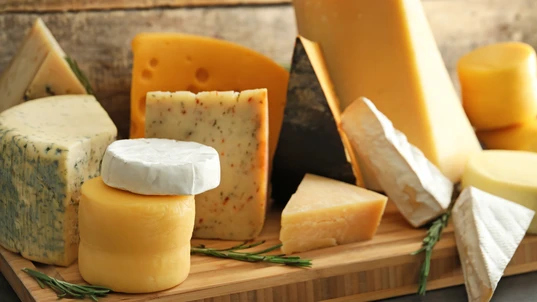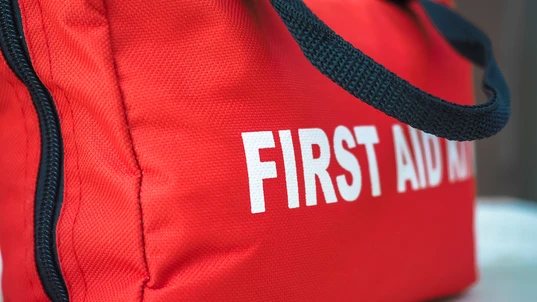Rare Food Allergies on the Adelaide Food Trail

Danger

Adelaide is consistently celebrated as Australia's "Most Liveable City", and this is partly due to its long and proud history as the purveyor of high-quality food and drink.
We recently published a resource on Adelaide's thumping estival scene, wherein we also covered important first aid information for festival goers. We quickly realised, however, that one resource was not sufficient to capture the expansiveness and vibrancy of Adelaide's cultural life. As some of Adelaide's most renowned festivals, such as Tasting Australia and the Adelaide Beer & BBQ Festival, can attest to - Adelaide is famous for its rich and dynamic food and drink culture. From wine that rubs shoulders with those produced in Bordeaux and Napa Valley, to cheese that is aged for more than 600 days - Adelaide's veritable buffet can make anybody's mouth water. Today, we are going to explore the proud purveyors of some of Adelaide's most famous food and drink items. We are also going to cover the allergic responses that these food and drink items can cause. That way, you will know what symptoms to look out for while stuffing your face!Wine
Of course, we could not publish an article on Adelaide’s food and drink culture without mentioning wine. South Australia's western border comprises the white sand beaches of the Gulf St Vincent, while its eastern border comprises the rolling hills of the Mount Lofty Ranges. As a consequence of this diverse geography, South Australia has a diverse climate. These two conditions subsequently facilitate the production of an expansive range of grape varieties. In fact, South Australia has 18 distinct wine regions. Riesling lovers can get their fill from wineries in the cooler Clare Valley region, while Shiraz enthusiasts might be more inclined to visit the Barossa Valley, which has a hotter, more humid climate. As it is considered the gateway to South Australia's 18 distinct wine regions, Adelaide was recently recognised as a Great Wine Capital, a title similarly bestowed to Bordeaux in France, and Napa Valley in the United States. As well as accounting for 80% of Australia's premium wine, Adelaide is similarly home to leading viticultural education, research, and development institutions, including the National Wine Centre, and is considered a wine innovation hub. For instance, it was during the 1990s that South Australian winemakers pioneered the use of screw caps for convenience and quality assurance.
Due to the diversity of South Australia's geography and climate, Adelaide is renowned for producing a wide variety of premium wines.
Allergens Found in Wine
Unbeknownst to many wine drinkers, wine can actually cause allergic reactions. This typically occurs due to the presence of sulfites. Sulfites naturally occur in wine during the fermentation process, when the yeast metabolises. However, they are also regularly added as preservatives to maintain the wine’s colour and shelf life, and to prevent the growth of fungi or bacteria. For instance, sulfite preservatives are added to dessert wines to prevent the excess sugar therein from starting a secondary fermentation process. Allergic reactions to sulfites can present in people who are deficient in an enzyme called sulfite oxidase, which helps break down sulfur dioxide. Sulfur dioxide is a chemical oxide that is closely related to sulfites; in fact, the two are often lumped together in food and drink. This includes wine, which sulfur dioxide prevents from oxidising. The inhalation of sulfur dioxide can also cause a reflex contraction of the airways, which could explain why people with asthma are more likely to live with a sulfite allergy.Oysters
South Australia is bordered by over 4,000 kilometres of pristine coastline. It is unsurprising, then, that Adelaide is renowned for supplementing its internationally acclaimed wines with equally pre-eminent oysters. Oysters, like pickles, can be a polarising topic. Quality oysters are often touted for "tasting like the sea", which can cause some people to beg the question - who wants to eat the sea? Regardless of where you sit on the oyster debate, you are unlikely to go without while looking for oysters in Adelaide. Adelaidean restaurants typically source their oysters directly from one of the many oyster farms lining the South Australian coast, including those located on Eyre Peninsula, Yorke Peninsula, and Kangaroo Island. This wide breadth of oyster farms lends itself to an enviable variety of oysters, some of which are endemic to South Australia. For instance, oyster farms located on Kangaroo Island are renowned for producing one of the rarest oysters in the world, the Angasi Oyster, which has a unique umami flavour. Oysters grown on Eyre Peninsula, meanwhile, are cultivated away from freshwater flows in the crisp, nutrient-rich ocean swells of the Great Australian Bight, and so they have a distinctly salty taste. So passionate is Adelaide's love affair with oysters that, many Adelaidean restaurants, such as the Glenelg Oyster Bar, provide patrons with oyster shucking classes so that they can enjoy fresh oysters in the comfort of their home.
This oyster farm located on Coffin Bay, Eyre Peninsula, is just one of many providing fresh, high-quality oysters to Adelaide restaurants.
Allergens Found in Oysters
Allergic reactions to oysters can be considered rare; unlike most other food allergies, which tend to present during a person’s childhood, shellfish allergies – that is, allergic reactions to the likes of oysters, prawns, scallops, and other crustaceans and molluscs – can present during a person’s teenage years and adulthood. Likewise, though most food allergies tend to occur immediately after a person makes contact with the offending food, shellfish allergies can be delayed and even induced after physical activity. Food allergies occur when our immune system overreacts to a particular protein found within that food. When it comes to oysters and other shellfish, the immune system tends to overreact to a protein called tropomyosin, which helps regulate when a muscle contracts and relaxes. It is important to note, seafood allergens are typically heat stable and can not be easily destroyed through cooking. As such, even if you prefer your oysters Kilpatrick style, as opposed to fresh, you could still be at risk of a nasty reaction to tropomyosin, especially if you decide to walk around Adelaide afterwards to help the oysters go down!Cheese
As Adelaideans would appreciate, if you do not fancy pairing your wine with oysters, there is another delectable item on offer to ensure your drink does not get lonely – cheese. Adelaide is renowned for producing an expansive and innovative array of high quality cheeses, as it is home to a proud dairy industry that stretches back to 1837, when the first European settlers arrived and sought new means to feed their growing community. Nowadays, there are over 220 fairy farms across South Australia, which account for 5% of the country's dairy production. It is not enough for Adelaidean cheesemakers to simply make fine cheeses - many of them hold masterclasses in their maturing rooms to help people appreciate the conditions under which different types of cheeses are produced, and to learn the basic rules of sensory analysis. This is true of Smelly Cheese Co., which allows its patrons to get up close and personal with unique cheeses sourced locally and abroad, from 4 Year Old Cloth Cheddar from the Murray Bridge to Truffle Infused Parmesan shipped all the way from Italy.
It is not uncommon for Adelaide restaurants to house a variety of cheeses, from fan favourites like brie and camembert to the more divisive blue cheese.
Allergens Found in Cheese
Cheese allergies fall under the umbrella of milk allergies, which tend to present during a person’s childhood. In complete contrast to shellfish allergies, milk allergies tend to diminish as a person gets older. In some respects, milk allergies can be considered rare, in that they are often mistaken for an intolerance to dairy. The two, however, could not be more dissimilar; while food allergies relate to the immune system, food intolerances involve the digestive system, and they tend to worsen as a person gets older. People who are dairy intolerant do not produce lactase, an enzyme required to digest the sugar in milk, which is called lactose. As such, instead of being digested in the stomach and small intestine, the lactose is broken down by bacteria in the colon, thereby resulting in bloating and gas. On the other hand, when people experience an allergic reaction to cheese, their immune system is often responding to a protein called casein. Casein is integral to the production of any type of cheese, as it causes milk to curdle. Food intolerances, unlike food allergies, are not life-threatening. So, if you are intolerant to milk, you can still enjoy Adelaide’s impressive spread of fine cheeses, albeit with lots of bloating and gas. However, if you begin noticing any allergy symptoms, which we are about to cover, you will have to back away from the cheese knife.Signs and Symptoms of an Allergic Reaction
The signs and symptoms of an allergic reaction can range from mild and moderate to severe. Anaphylaxis is the most severe form of an allergic reaction and has the potential to be life-threatening. Anaphylaxis occurs when a person is exposed to an allergen, such as food or medicine, to which they are already extremely sensitive. It can take only 1 to 2 minutes for a mild allergic reaction to escalate to anaphylaxis, though some casualties may find that their symptoms are always mild. Mild to Moderate Allergic Reaction- Swelling of the lips, eyes, and/or face.
- Hives, welts, and/or body redness.
- Tingling mouth.
Severe Allergic Reaction: Anaphylaxis
- Swelling of the throat, lips, tongue and/or around the eyes.
- Difficulty and/or noisy breathing.
- Difficulty talking and/or hoarse voice.
- Persistent cough and/or wheeze.
- Abdominal cramps, nausea, vomiting, and/or diarrhoea.
- Anxiety and/or a sense of doom.
- Persistent dizziness and/or collapse.
- Loss of consciousness.
- Small children can become pale and ‘floppy’ in appearance.

First aid responses to allergic reactions depend on the severity of the symptoms. Some casualties exclusively experience mild symptoms, while others are prone to anaphylaxis.
First Aid Response to Allergic Reactions
Mild to Moderate Allergic Reaction- Calm and reassure the casualty.
- Follow the direction of the casualty's 'ASCIA Action Plan for Allergic Reactions', if they have one written by their doctor.
- Give other medications (if prescribed).
- Phone the casualty's family/emergency contact and monitor for signs of deterioration.
Severe Allergic Reaction: Anaphylaxis
- Calm and reassure the patient.
- Lay the casualty flat and ensure they do not stand or walk. You may allow the casualty to sit up if their breathing becomes difficult.
- Follow the direction of the casualty's 'ASCIA Action Plan for Allergic Reactions', if they have one written by their doctor.
- Assist with adrenaline autoinjector e.g. EpiPen® administration.
- Immediately call Triple Zero (000) for an ambulance, regardless of how the casualty feels.
- Administer oxygen and/or asthma medication for respiratory symptoms.
- Administer further adrenaline autoinjector e.g. EpiPen® dose if the casualty does not respond after 5 minutes.
- Continue to monitor the patient. If they become unresponsive and stop breathing normally, immediately commence CPR.
Originally published at
https://www.australiawidefirstaid.com.au/resources/rare-allergies-adelaide-food-trail
as part of the Australia Wide First Aid Articles Library









